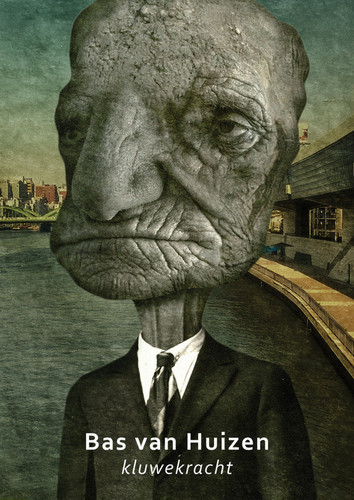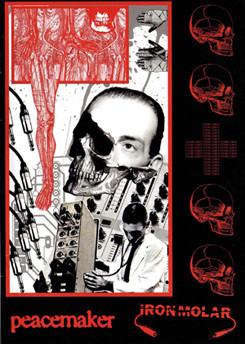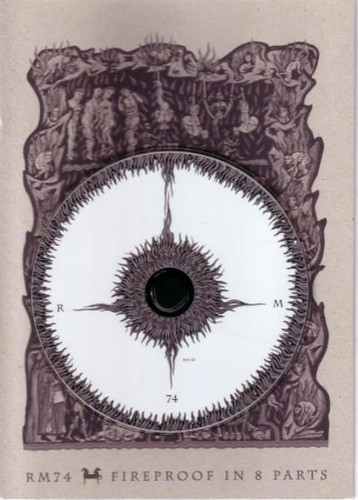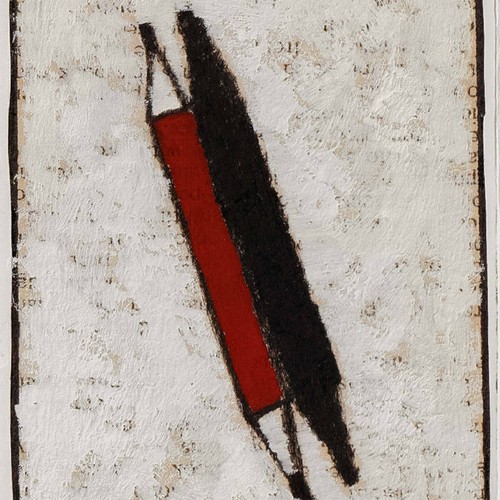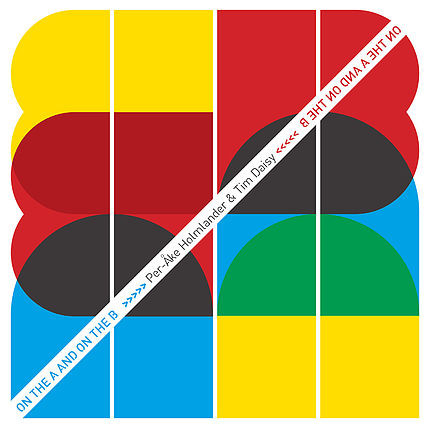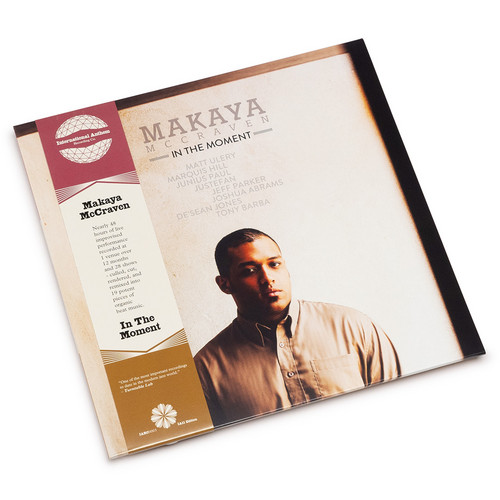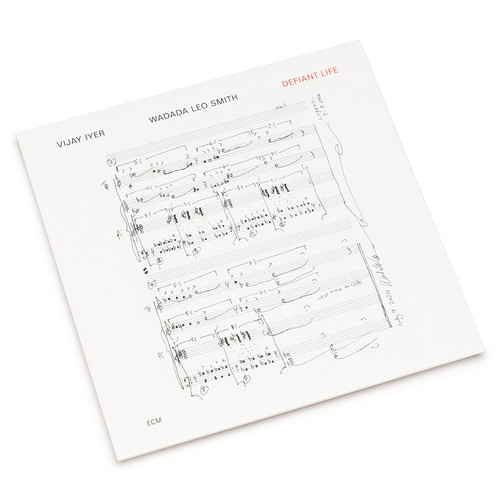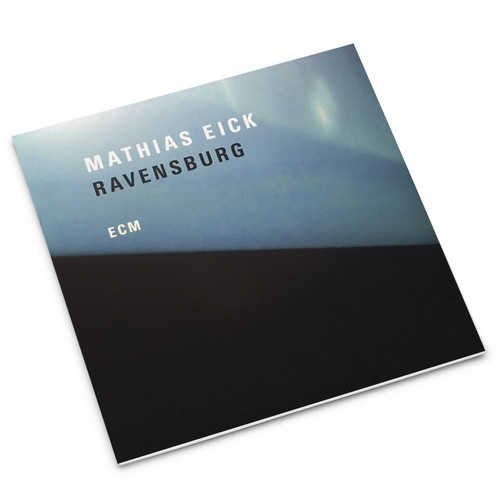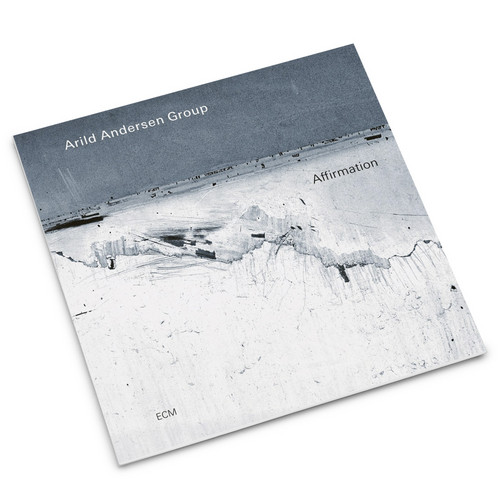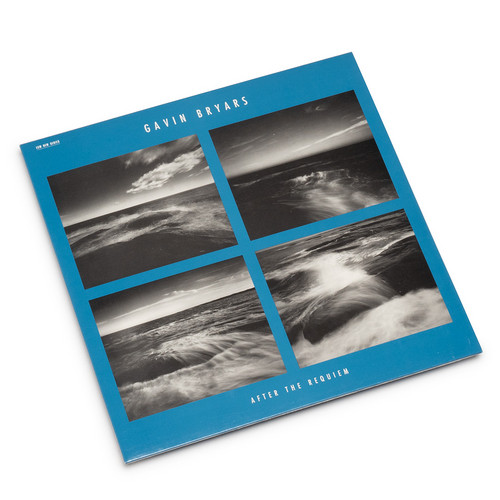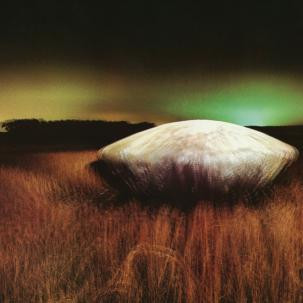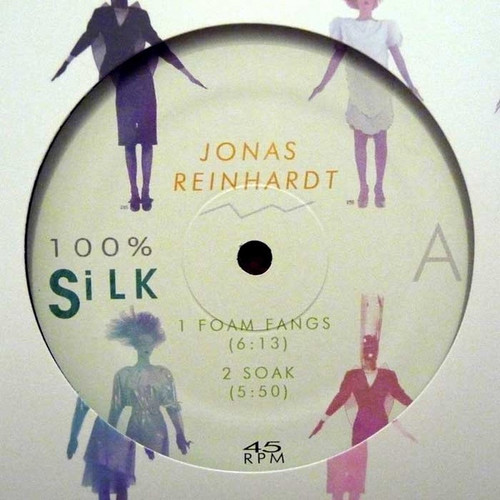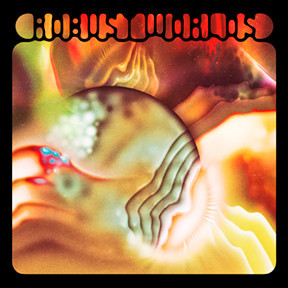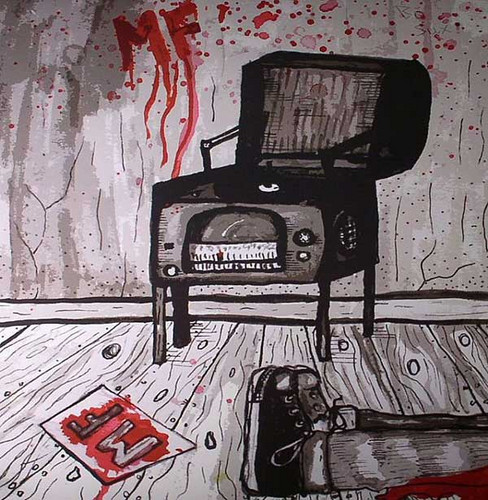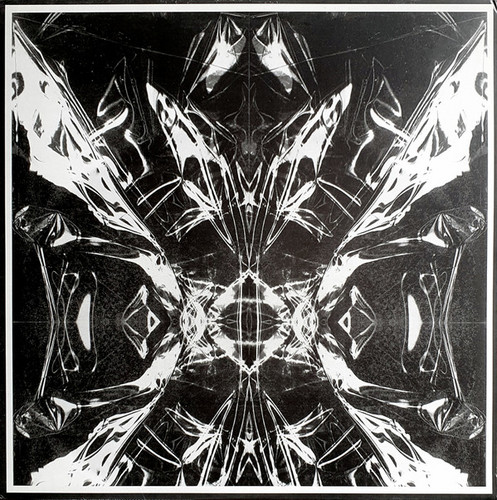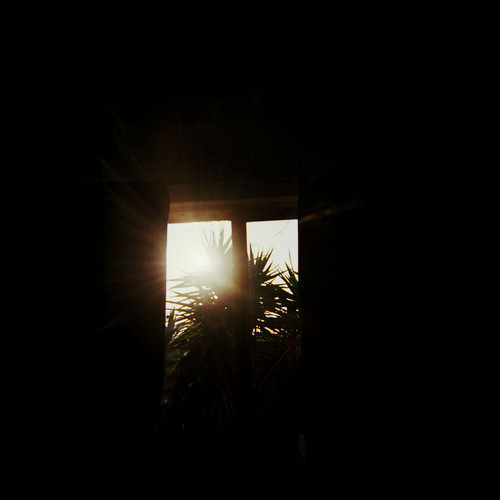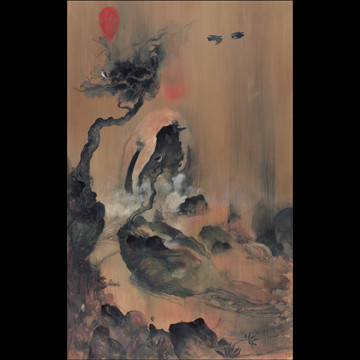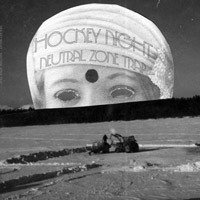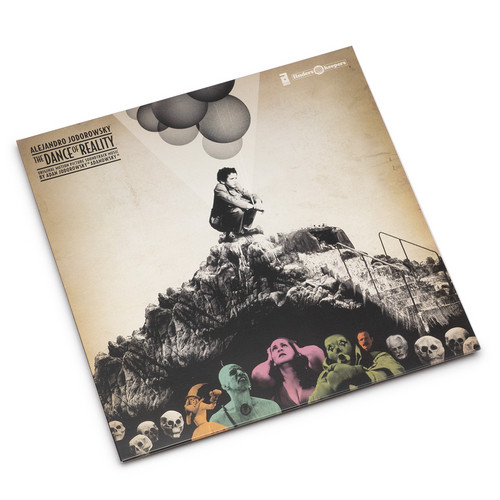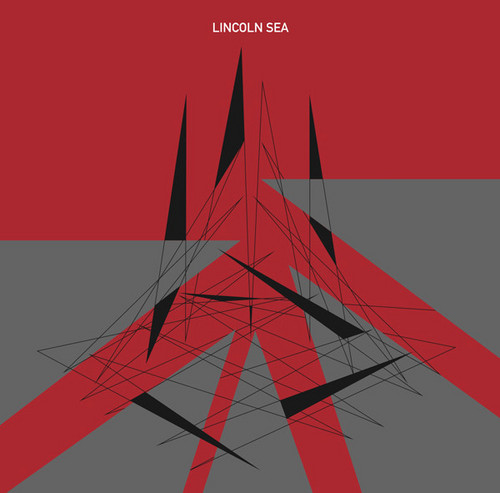Back in stock
Kluwekracht
Bas van Huizen is a Dutch artist based in Xi'an, China. He mainly uses guitar, voice, found objects and computer to record work that ranges from beat based electronic music under the moniker Basi Goreng to more abstract works under his own name. In 2013 he added another pseudonym to his discography with an experimental noise album by Shoganai. In addition to music and sound art Bas van Huizen is also active as a video artist creating animation, music videos, live visuals, and video installations…
Iron Molar / Peacemaker
2008 release ** Comes in a folded A5 cardboard sleeve. "Accompanying Iron Molar’s second step into noise hell is, like a diabolical Virgil, Peacemaker, a “noisy” project by the drummer of the already noisy Brutal Truth and Total Fucking Destruction. One piece for the Italians, three for the American. It’s a shame that the space reserved for our compatriots is so limited, because Là Dove Vita C’Era I Volti Sembran Teschi In Cera is an excellent piece, marked by a solemn martial beat, which deve…
Fireproof In 8 Parts + Part 9
2007 release ** Oversized cardboard sleeve. "With his fourth solo-release, Reto Mäder aka RM74 takes us on a fevery missionary journey which is driven by an unholy quest for saturation and leads us into the dark places where tortured souls dwell. Unpredictably muckraking in the shoals of timeless abysses, RM74 seeks to kindle the supressed fires of passion. Nothing less! To do justice to this mission, Mäder interweaves acoustic instruments such as an organ, a piano, a bassguitar or a harp with a…
Corpse
*100 copies limited edition* Shame File Music and Albert’s Basement follow up the critically-acclaimed 2022 reissue of seminal Melbourne band Ad Hoc's Distance cassette with the band's obscure barely-released (perhaps six home-dubbed copies) live cassette Corpse - available digitally and on a limited edition of 100 cassettes from September 2023 (pre-order now). Differing dramatically from Distance, Corpse captures the trio presenting a wall of almost self-playing instruments live to a bemused Cl…
On the A and on the B
Per-Ake Holmlander is born in 1957 in Skellefteå in the very north of Sweden. Holmlander received his diploma in classical tuba in 1983 at the Royal Academy of Music in Stockholm with Michael Lind as a teacher. Holmlander has always worked simultaneously with improvisation, jazz and rock music as well as classical and contemporary music.As an improviser Holmlander has worked with - Eje Thelin, Marilyn Crispell, Paul Lovens, Folke Rabe, Phil Minton, Sten Sandell, Sven-Åke Johansson, Mats Persson,…
In The Moment
Makaya McCraven’s International Anthem debut 'In The Moment' is the album that properly introduced the then-burgeoning drummer/producer to the world. In many ways, it also laid the groundwork for a working method that both McCraven and the label have returned to again and again over the years: nearly 48 hours of live improvised performance recorded by IARC house engineer Dave Vettraino at 1 venue over 12 months and 28 shows - culled, cut, rendered, and remixed into 19 potent pieces of organic be…
Defiant Life
Anchored in the idea that, despite all obstacles, the human experience casts a net of possibilities, Defiant Life – Vijay Iyer and Wadada Leo Smith second duo recording for ECM – proves a profound meditation on the human condition and both the suffering and resilience it entails. An ethereal iridescence glistens between Leo Smith’s unmistakable trumpet wail and Vijay’s textural key strokes on piano and Fender Rhodes, conjuring multi-dimensional spaces of thoughtful musical conversation. “We work…
Ravensburg
*2024 stock* One of the pleasures of Mathias Eick’s Midwest album was hearing his vaulting trumpet supported by violin, an instrumental combination further developed on Ravensburg. The new violinist in Eick’s ensemble is Håkon Aase, one of the up-and-coming players of the Norwegian scene, whom attentive ECM listeners will already know from his work with Thomas Strønen’s group. The core Eick road band is further shored up by the addition of Helge Andreas Norbakken, who interacts excitingly with f…
Affirmation
Norwegian bassist Arild Andersen, an ECM musician for more than fifty years, is a masterful player who has always welcomed a challenge. His first recording with his new quartet – including rising stars Marius Neset and Helge Lien (both bandleaders in their own right)– is almost entirely improvised. The players make the leap of faith together and find and develop forms at the moment, an object lesson in spontaneous group creativity. Affirmation was recorded in November 2021 at Oslo’s Rainbow Stud…
After The Requiem
Original 1991 LP edition Stepping into the territory of Gavin Bryars is like coming home, so familiar are the morphemes with which he composes his musical language. One of the most significant recordings in the Bryars catalogue, this disc offers a fine condensation of his spirited and nostalgic sensibilities.
After the Requiem dates from 1990 and follows his Cadman Requiem of the previous year. After completing the latter, which was written for the Hilliard Ensemble in memory of Bryars’s friend…
Water's Edge
Future Shuttle is a Greenpoint, NYC-based duo (sometimes trio) comprised of Jessa Farkas and Camilla Padgitt-Coles. Prior to the group’s early 2009 conception, the pair studied electronic music at Oberlin College alongside their friends in Blondes and Teengirl Fantasy. Blondes member Sam Haar also produced the Water’s Edge EP, the group’s first officially released recording. In Future Shuttle’s beautifully dense brew of psychedelic reprogramming, Tangerine Dream meets the KLF at the UFO Club, an…
Foam Fangs
West Coast synth guru Jonas Reinhardt (aka Jesse Reiner) makes his 100% Silk debut with 'Foam Fangs', which sees the usually downtempo producer pushing things up a couple of notches. The cosmic Jarre-esque synthesizer washes are still present, but are bolstered with chest-punching 4/4 rhythms and rubbery looping sequences straight out of the 1987 house rulebook. Somehow this gives the EP the glow of Detroit-era pioneer Juan Atkins and muddles it with the Italo-laced fuzz of Johnny Jewel. …
Emotional Planet
Chris Rose's Robust Worlds has impressed us since first glimpse. He was actually barefoot, if you can believe that, and his set had the feel of a way more lysergic Kevin Ayers. It was freezing fucking cold and I'm pretty sure he wore a Hawaiian shirt. His debut LP is called Emotional Planet, and it's deceptively simple. Voice, guitar, some noisy shit, whatever. His playing is sick: fluid, unforced, warm, soothed and soothing. It's a bath you don't want to exit. Seriously, if yr going to play gui…
Mf
Last year, Bill Orcutt of 90s gnarly Miami noise group Harry Pussy blasted the bejesus out of blues with a beat-up guitar and blew us all away with How The Thing Sings to get a spot on our favorites of 2011. Now, Orcutt’s buddy Mark Feehan, who frequently played spastic guitar for Harry Pussy, is releasing his first solo record, MF, with old Harry Pussy promoters Siltbreeze Records. Feehan’s independent work is somewhat similar to Orcutt’s acoustic binges of raw Americana, but it echoes louder h…
Valedictorian / Exoskeleton
Valedictorian/Exoskeleton, Dan Friel’s first release for Thrill Jockey, contains two brand new songs, as well as the first ever remixes of his music. “Valedictorian” opens the EP with a burst of adreneline, pure pop filtered through a layer of noise. “Exoskeleton” is more mysterious, with bursts of Friel’s overdriven synths coming in and out of focus over a steady pulse. The first remix is a dancefloor ready take on “Exoskeleton” courtesy of Moss of Aura, the solo project of Gerrit Welmers, one …
Black colors
Over more than a decade Peter Kolovos has created an incredibly physical and dynamic musical language using the electric guitar. He plays music that unpredictably flows from electrified fragments of sound which fold and expand in dense layers and massive tones that surge and collapse in rapid succession. His approach has been called 'massively a-formal' and his control of timing and texture 'masterful.' Rather than set harmonic or rhythmic structures, he draws form from open sequences of …
Primeval Man Born of the Cosmic Egg
In Chinese mythology, Pan Gu is the primeval man, born of the cosmic egg. One day the egg split open. The top half became the sky and the bottom half the earth. Pan Gu, who emerged from the broken egg, grew ten feet taller every day, just as the sky became ten feet higher and the earth ten feet thicker. After 18,000 years Pan Gu died. Then, like the cosmic egg, he split into a number of parts. His head formed the sun and moon, his blood the rivers and seas, his hair the forests, his sweat the ra…
Neutral Zone Trap
Hockey Night was born accidentally at the Colour Out Of Space Festival in Brighton in 2008. It's a free jazzy brainchild of four Finnish musicians: Arttu Partinen, Jaakko Tolvi, Jonna Karanka and Sami Pekkola.Recorded live at Lal Lal Lal Festival 2012 by Élg and Jussi Ahonen.Mixed by Élg, mastered by Pentti Dassum, covers by Jonna.
The Dance of Reality
After a twenty-three-year hiatus, The Dance of Reality marks the triumphant return of Alejandro Jodorowsky, the visionary Chilean filmmaker behind cult classics El Topo and The Holy Mountain. In the radiantly visceral autobiographical film, a young Jodorowsky is confronted by a collection of compelling characters that contributed to his burgeoning surreal consciousness. The legendary filmmaker was born in 1929 in Tocopilla, a coastal town on the edge of the Chilean desert, where the film was sho…
Lincoln Sea
Lincoln Sea is Robert Piotrowicz's second release in 2013 after the acclaimed When Snakeboy Is Dying. 'Snakeboy' opened windows with it's sophisticated weaving of guitar, piano and vibraphone, along with Piotrowicz's more recognisable modular synth work. Praised from the likes of Brian Olenwick (Just Outside), Massimo Ricci (Touching Extremes) 'Snakeboy' saw Piotrowicz take a confident leap into new realms of sound. With Lincoln Sea, the potential of Piotrowicz' vision is greatly expanded whilst…
